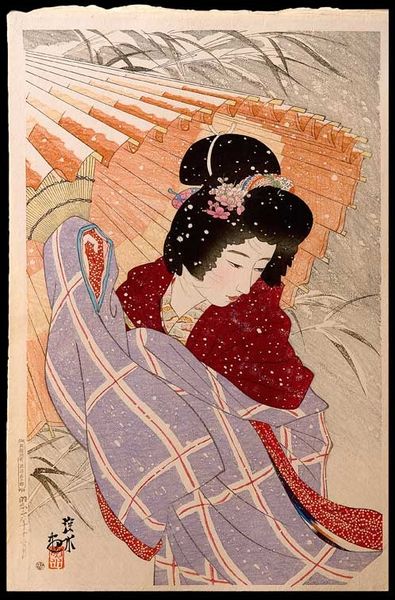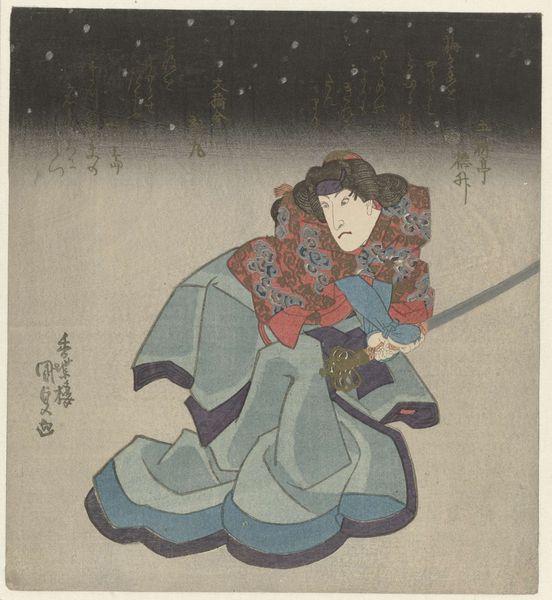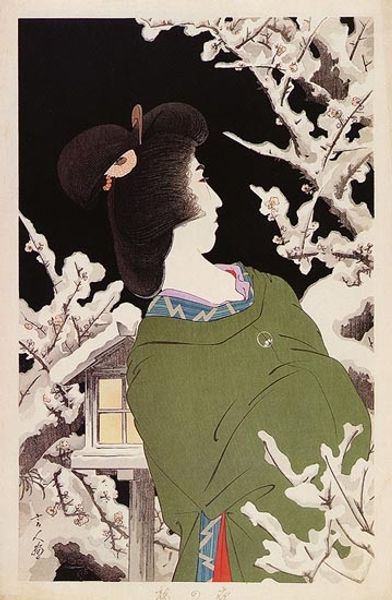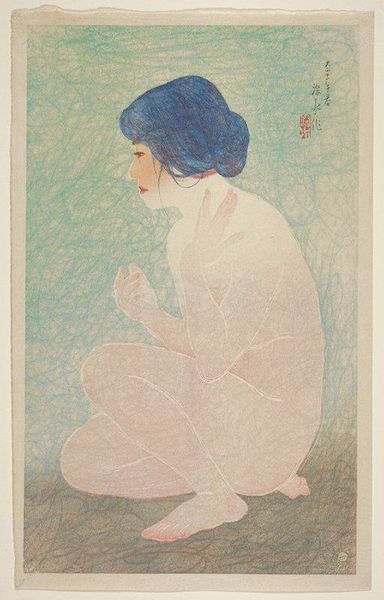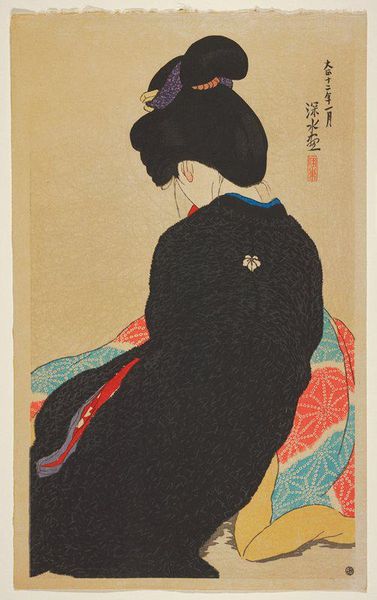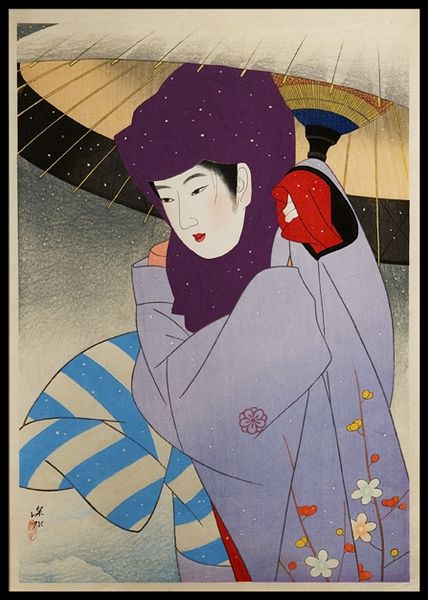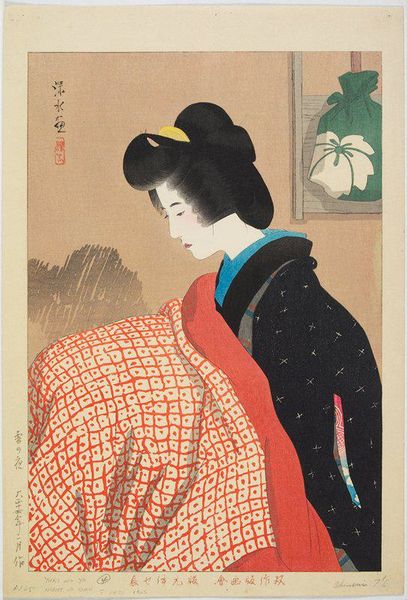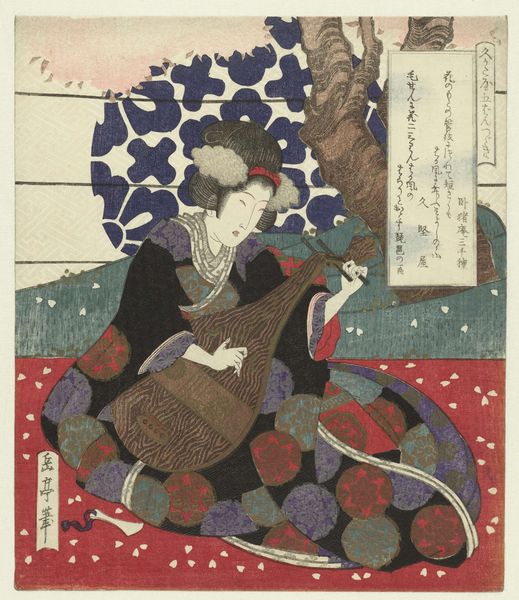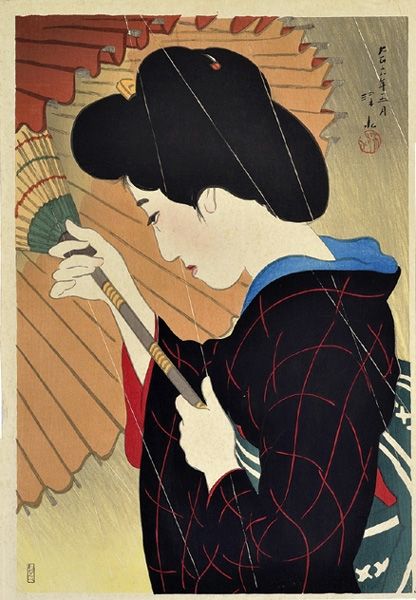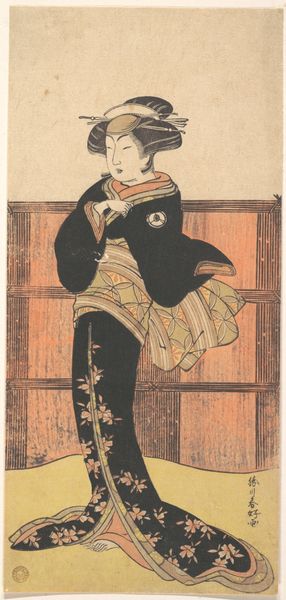
Dimensions: 16 × 9 1/2 in. (40.64 × 24.13 cm) (image)23 × 19 × 1 1/2 in. (58.42 × 48.26 × 3.81 cm) (outer frame)
Copyright: No Copyright - United States
Curator: There's an understated beauty in this work, isn't there? I'm drawn in immediately by the subject’s quiet pose against the snowy backdrop. Editor: Indeed. Here we have Ito Shinsui’s "Snowy Night," a woodblock print created in 1923. Shinsui was a prominent figure in the shin-hanga movement, which revitalized traditional ukiyo-e printmaking in early 20th century Japan. Curator: Ukiyo-e reimagined for a modern audience. You know, focusing on the physical making, the woodblock print process interests me. Each line, each delicate snowflake, meticulously carved. What kind of wood was used, and how did that affect the final print? Editor: Typically, cherry wood was favored for its tight grain, lending itself to incredibly fine detail. It’s fascinating to consider the labor involved, the workshops, and the economics of print production during this era. These prints weren't just artistic expressions; they were commodities. Curator: Absolutely. And look at the subtle variations in the blacks and grays – that layering technique, the textures achieved with simple tools and ink. The interplay of craftsmanship and mass production really defines the movement. The publishers had immense power dictating taste and subject. Editor: Precisely. The clothing she wears, undoubtedly produced by certain workshops catering to particular demographics, tells a story. The positioning of women in this time was interesting too. Their role within a changing landscape of both new and traditional ideals always shows through works of art from this era. Curator: The print's inherent materiality, its grounding in accessible craft practices, speaks volumes about a shift away from purely elitist notions of art. In this artwork you can see more popular appreciation growing at the time. Editor: It reflects the broader cultural and social shifts of Taisho-era Japan, its move towards a more democratic public sphere and an openness to different ways of depicting, and seeing, women in visual culture. This particular print made its way to the Minneapolis Institute of Art, showing us where these once commodified artworks are being enjoyed today. Curator: Considering the material transformation involved - raw wood becoming a printed image viewed across continents – gives us so much to consider in understanding our art consumption in the contemporary world too. Editor: Looking at how artworks gain cultural value and function in art historical narratives allows me to engage deeply with this moving portraiture and its lasting impression on the canon.
Comments
No comments
Be the first to comment and join the conversation on the ultimate creative platform.
